How to pay for water by the meter: specifics of calculating water consumption + analysis of payment methods
Now, most consumers of utility services are provided with metering devices, since paying for water on the meter has become much more profitable than on a common basis.
You can calculate the amount of payments yourself. To do this, you need to calculate the flow rate, know the tariffs, and also understand that in addition to water supply, there are other services that are affected by the readings of water meters.
Next, we will tell you how to correctly make calculations and pay for water supply.
The content of the article:
Calculation of water consumption
To accurately calculate the water consumed at the facility, meters are installed. They are placed on pipes, which serve both hot and cold water. As a rule, installation work is carried out by specialists of a water supply organization or management company, since the devices will need to be sealed.
Read more about how to install and seal meters. Further.
Periodically, representatives of organizations providing housing services, inspect metering devices for the safety of seals and the absence of visual problems with the functioning of the devices. The owners of the premises are obliged to allow inspectors to the installation site of meters. Also, counters must pass mandatory verification, the terms of which are indicated in the technical documentation for the device.
Counters are installed in the area of responsibility of the user of services - in an apartment, private house or non-residential premises. If there are several pipes through which water is introduced, then all of them must be equipped with a metering device.
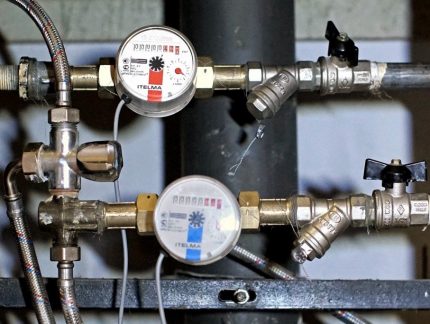
Every month at a certain time, the owners take readings. Each water meter has a dial that shows the volume of fluid passed through it.
It can provide data with different accuracy:
- if there are only 5 black digits on the dial, then the displayed number is the number of cubic meters;
- if in addition to 5 black numbers there are 3 more red numbers, then the displayed number is the number of liters.
In any case, to pay for utilities, the consumer needs to take readings accurate to a cubic meter, so the red numbers (if available on the instrument’s dial) need not be taken into account.
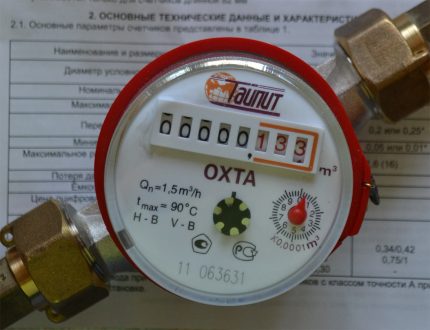
Since it is necessary to calculate the volume of water on the meter per month, it is necessary to subtract the previous ones from the current readings. And so it is necessary to do for each meter, then adding the data separately for cold and hot water.
For example, if there are two cold water inlets and the meter readings for the previous month are 312 and 445 cubic meters, and for the current month - 316 and 450, then the total consumption (V) will be equal to:
V = 316 + 450 - 312 - 445 = 9 m3
In order not to be mistaken in the calculations, you can keep a special house log in which to record the readings of meters for water, electricity, gas and heating. If the information on the previous testimony is lost, then it can be found by contacting the organization that accepts payments.
Calculation of the cost of the counter
It is possible to calculate the amount necessary for payment for utilities related to water, independently. But for this you need to know the tariffs and some nuances of charges, which are then displayed in the payment.
Hot and cold water supply
Organizations provide water supply services to the population in accordance with established tariffs. Payment of hot water according to meter readings is much more expensive than cold (3-8 times), as companies need to compensate for the cost of servicing communications and heating water.
Tariffs are constantly changing and depend on the region and service provider. The exact value of the cost of a cubic meter of hot and cold water can be obtained from the organization with which the water supply agreement has been concluded, or by contacting the housing and communal services committee of the district or the local administration.
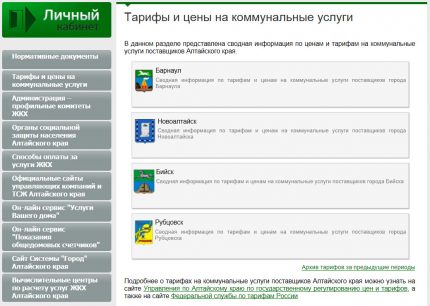
Assume that the total consumption of cold water per month was 6 m3and hot - 4 m3. The tariff for water supply established by the administration is 22.77 r / m3, for hot water supply - 132.69 r / m3.
In this case, the total amount for water supply (R) will be equal to:
R = 6 * 22.77 + 4 * 132.69 = 667 rubles. 38 kopecks
Sometimes instead of the tariff for hot water, expressed in r / m3 indicate another parameter - the cost of heating water r / Gcal. It is possible to independently calculate the number of gigacalories spent on heating one cubic meter of hot water only with a known value dt - temperature difference between cold and hot water. This also includes heat loss that an ordinary consumer cannot measure.
Therefore, accurate calculation with such data is not possible. But approximately 0.050 - 0, 065 gigacalories are expended on the heating of one cubic meter in the middle zone of Russia. Thus, it is possible to calculate the range of the amount to pay for water services.
Let with the same consumption of cold water 6 m3 and hot 4 m3 the cost of water supply is 22.77 r / m3, and the price per gigacalorie is 1827 r / Gcal.
Then the amount for water supply will be within the following range [R1, R2]:
- R1 = 22.77 * 6 + (22.77 + 1827 * 0.050) * 4 = 593 rubles. 10 kopecks;
- R2 = 22.77 * 6 + (22.77 + 1827 * 0.065) * 4 = 702 rubles. 72 kopecks
In many houses it is much more economical to supply boiler for heating hot water in a plumbing system or heating circuit. In this case, the tariff will be floating. It will depend on the cost of cold water supplied and the cost of heating it.
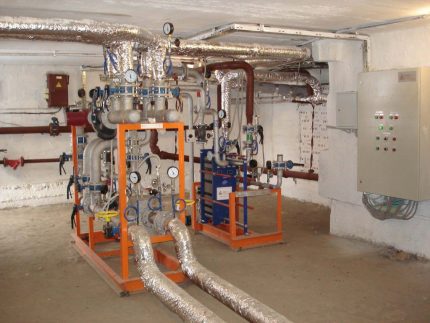
The consumer, as well as in the case of centralized supply, will need to take readings from the meters and provide data on water consumption to the organization responsible for managing the house.
Wastewater and general household needs
In private homes and cottages, the cost of paying for cold water according to the meter is often the only water utility services. In apartment buildings, this is not so.
All water entering the apartment leaves through the sewer. Drainage also requires financial costs for pipeline maintenance and cleaning activities.
There is no need to install meters on the sewer, since the drain volume is equal in total to the amount of hot and cold water received. Knowing these indicators and the tariff for the service, you can calculate its cost.
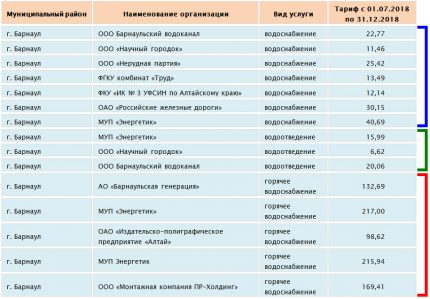
Another type of water-related costs incurred by the owner of the property in an apartment building is the payment of the maintenance of common house property (SDI). Previously, this column in receipts passed under the acronym ODN (common house needs). But the meaning of these payments remained the same.
When summarizing data from individual water meters, the volume of consumed water is obtained slightly less than the general metering device shows.
This occurs for the following reasons:
- the costs of washing floors in the entrances, watering lawns in the territory of the house and other needs;
- pipe leaks within the boundaries of the house;
- underestimation of indicators of water consumption or lack of data on part of the premises.
To compensate for these costs, water shortages are distributed among consumers in proportion to the area they occupy. That is, the readings of an individual meter will not affect the amount of payments by SDI.
How to pay for water supply?
It is necessary to timely pay for water supply and sanitation. In most cases, you need to remove and transmit meter readings, wait for the receipt and pay for the services.
Data Submission Dates
The existing legislation does not contain tightly tied to the dates of the month dates for the transmission of data on housing services. The "Rules for the provision of public utilities" states that these terms must be defined in the contract.
Therefore, the period of receiving information for calculating the cost of resources consumed and forming a receipt is chosen by the water supply organization or the company managing the apartment building.
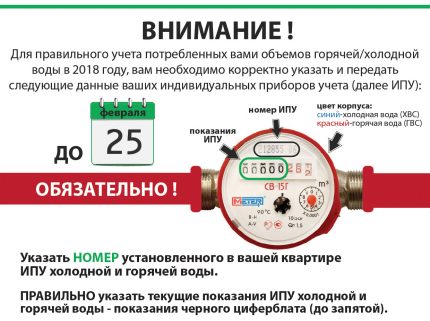
Synchronous supply of information is needed primarily for the correct calculation of indicators that will go to the column "SOI". The deadline for submitting data for utility bills (including water) for December and April may be shifted to earlier dates due to New Year and May holidays.
There are many ways to provide meter readings and they depend on the company that generates the receipts.
The following types of communication are commonly available and popular:
- phone call;
- SMS with a specific sequence of information;
- filling out the form online.
If the water consumer did not give information on metering devices on time, then automatically the average indicators for the last 6 months will be calculated. If the owner does not provide data within 6 months, then he can be transferred to a standardized payment, which, as a rule, significantly exceeds real consumption.
Payment Methods for Water
You can pay for water supply according to meter readings via the Internet, at a bank, or directly at the cash desk of a management or resource supply company.
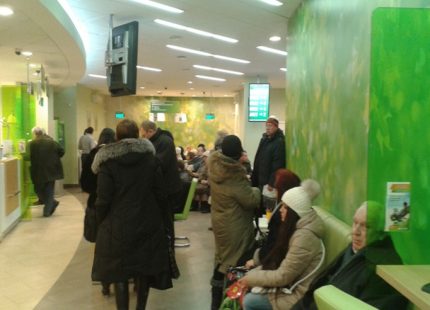
If the consumer has a bank card with the ability to make online payments, the easiest way will be to pay for utilities via the Internet.
There are several sites through which this operation can be performed:
- Unified Information Settlement Center (EIRC);
- state portal services (GIS housing and communal services);
- site of the bank that issued the card.
Everywhere you will need to register. You also need to know not only your address, but also the number of your personal account. After filling in all the data, the user will be transferred to the bank’s website, where it will be necessary to carry out the online payment procedure.
If this method is complicated or unusual, and the bank branch is close, then you can come there with a receipt. Payment can be made both at the cash desk (while the bank can take a commission), and at an ATM.
Sometimes, especially in small villages and towns where there is no bank, payment can be made at the post office or village council.
We also recommend that you read our other article, where we talked about the intricacies of the choice of water meters and gave a rating of the best devices according to users. More details - go to the link.
Conclusions and useful video on the topic
How to correctly take readings from a water meter:
One of the automatic reading systems:
Payment via Sberbank ATM using the receipt barcode:
Calculation of the volume of water consumed using these metering devices is quite simple. Knowing the tariffs for hot and cold water supply, you can calculate the sum of the costs of water and sanitation. Payment for services can be made at a bank, in a resource supplying organization, or via the Internet. The last way will avoid queues.
If you have any questions about calculations or payment for water supply services, you can ask them in the comments box, and we will try to respond to them promptly.

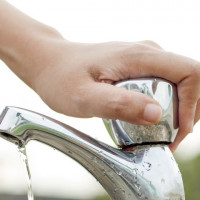 How to save and read water by the meter: modern devices and methods of saving
How to save and read water by the meter: modern devices and methods of saving 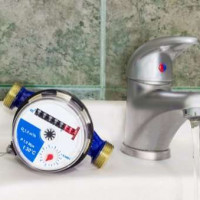 Verification period for cold and hot water meters: verification intervals and rules for their implementation
Verification period for cold and hot water meters: verification intervals and rules for their implementation  Verification of water meters at home without removal: the timing and subtleties of verification
Verification of water meters at home without removal: the timing and subtleties of verification 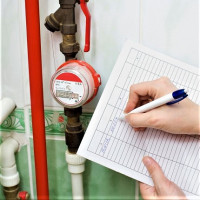 How to take water meter readings: a detailed guide to reading and transmitting the meter readings
How to take water meter readings: a detailed guide to reading and transmitting the meter readings 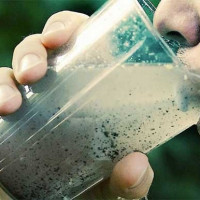 Rating of water filters for washing: rating of the best models and selection guide
Rating of water filters for washing: rating of the best models and selection guide 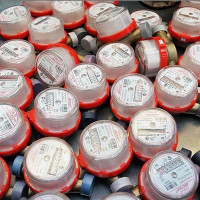 Rating of the best cold and hot water meters for an apartment: a dozen models + nuances of the choice of flow meters
Rating of the best cold and hot water meters for an apartment: a dozen models + nuances of the choice of flow meters  How much does it cost to connect gas to a private house: the price of organizing gas supply
How much does it cost to connect gas to a private house: the price of organizing gas supply  The best washing machines with dryer: model rating and customer tips
The best washing machines with dryer: model rating and customer tips  What is the color temperature of light and the nuances of choosing the temperature of the lamps to suit your needs
What is the color temperature of light and the nuances of choosing the temperature of the lamps to suit your needs  Replacement of a geyser in an apartment: replacement paperwork + basic norms and requirements
Replacement of a geyser in an apartment: replacement paperwork + basic norms and requirements
Not everywhere you need to calculate the amount of consumed cubic meters of water yourself. Here, for example, we just need to enter the current readings into the card every month, and the Criminal Code itself considers everything and writes these calculations on the receipt. You can consider yourself only if it seems that the Criminal Code is luring you. But personally, I do not think so, although maybe in vain.
I have my own house, only cold water enters the house while there is no meter - they counted as if we had a bath every morning and evening. And the whole family. And I set the counter - beauty, I pay only for the consumed volume, there is an incentive to save. Once a month, the controller comes, takes readings, and I pay online, it’s convenient, I don’t need to go anywhere. Having a counter is beneficial.
A meter is only beneficial if you consume a small amount of water or are just used to saving. But if every day you are used to soaking in a hot bath or just not at odds with saving, then I doubt very much that it will be profitable with a meter. It would not have then puzzle over how to get rid of it. I judge solely on my own, as I have a private house with a meter, as well as a two-room apartment without it.
Our management company makes it possible to transmit water readings via the Internet, it’s very convenient, you don’t need to calculate anything, but if you want to calculate, it’s very simple, multiply cubes by the tariff. You can also pay online, but a rather big transfer fee is taken, so I prefer to pay directly at their cashier's office, since I live nearby. Of course, having a counter is beneficial, since without a counter there are very large amounts at the norm plus penalties. But again, now you have to save water, once again do not open the tap and make sure that there are no leaks so as not to overpay.
Is it necessary to pay for the drainage of hot water if it is not in the house and is not even provided ??
Hello, tell me please, we have a private house, the house has a centralized sewage system, but only cold water, on which a meter is installed. There are two lines in the receipt for water, cold water and sewage, and so, for the sewage system they charge a double tariff for the selected water, is this true?